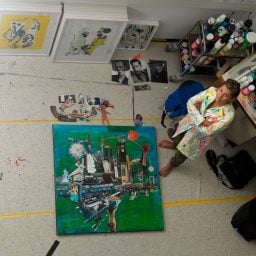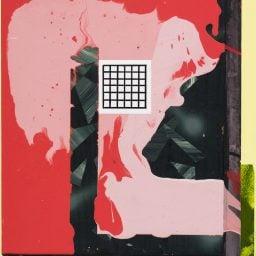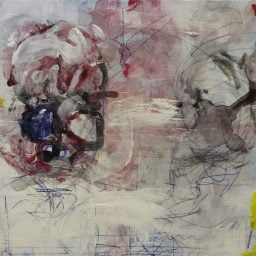Every month, hundreds of galleries add newly available works by thousands of artists to the Artnet Gallery Network—and every week, we shine a spotlight on one artist you should know. Check out what we have in store, and inquire for more with one simple click.
About the Artist: New Zealand-born artist Billy Apple passed away in October 2021 at the age of 85, leaving behind an influential artistic legacy marked by provocative gestures and an insouciant spirit. Perhaps the most infamous of these gestures was his decision, in 1962, to change his name—he was born Barrie Bates in Auckland in 1935—to Billy Apple. (Apple would later trademark the name, branding products with Billy Apple®.) After scraping through the Royal Academy of Arts in London, a classmate and pal of David Hockney’s, Apple moved to New York City. By 1964 he had fallen in with Pop art circles and was showing his work alongside Roy Lichtenstein, Claes Oldenburg, and Andy Warhol.

Installation view of “Billy Apple®: Rainbows 1965.” Courtesy of the Mayor Gallery.
One of the pivotal moments of his career came in 1965, with his second solo exhibition at Bianchini Gallery in New York City. In this seminal presentation, the artist exhibited eclectic rainbow light sculptures, marking one of the earliest embraces of neon as a medium. The rainbow proved a fitting motif for Apple, who was fascinated by the science of color and light. More than materializing an atmospheric event, in these works the artist brought dynamism and punch with forms that implied motion. A new exhibition, “Billy Apple®: Rainbows 1965,” at the Mayor Gallery in London—the gallery’s fourth devoted to Apple, in planning at the time of his death—revisits this electrifying show.
Why We Like It: Working together with the artist’s wife, Mary Apple, the gallery has restaged the “Rainbows” exhibition, assembling the surviving works still in his possession. The 1965 show featured neon floor sculptures, as well as Plexiglas pieces and serigraphs. Impressively, the current exhibition features four of the seven original neon sculptures, a rare semicircular rainbow print, and three Plexiglas objects—the largest gathering of this body of work since its debut.
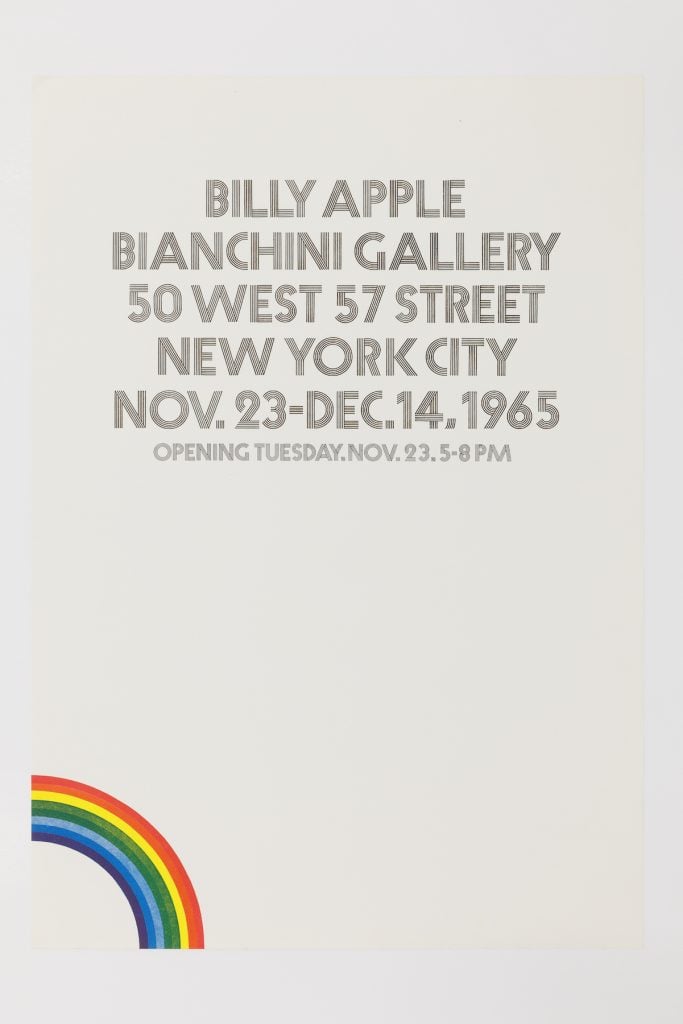
The Bianchini Gallery poster advertising Billy Apple’s 1965 gallery exhibition.
According to the Gallery: “Apple’s ‘Rainbows’ presciently point to the adoption of the rainbow as an icon of the 1960s, especially its appropriation as a symbol of peace in the era of anti-war protest. This is long before the rainbow’s role as an emblem for gay liberation and now the LGTBQI+ community. However, Apple’s real attraction was to the science of the natural phenomenon and his keen desire to go beyond conventional paints or pigments and investigate what he termed an ‘electric palette’ that could function, like the refraction and reflection of light through raindrops, as an immaterial emanation of pure color….In New York, where he moved in 1964, Apple lived on the Bowery, at the heart of the lighting district, and quickly made connections with the technicians, manufacturers, and retailers who could assist him in his experimentation with the coated glass tubing and mixing of inert gasses for his sculptures. Apple was part of a short-lived wave of interest in electric light as an artistic medium. Between 1965 and 1972, his fascination for neon was a crucial dimension of his transition from making discrete art objects, contributing to the evolving language of Pop, to working with spaces and materials, as he turned to a process-oriented practice attuned to artistic agendas that prevailed in the early 1970s.”
See additional images from the exhibition below.
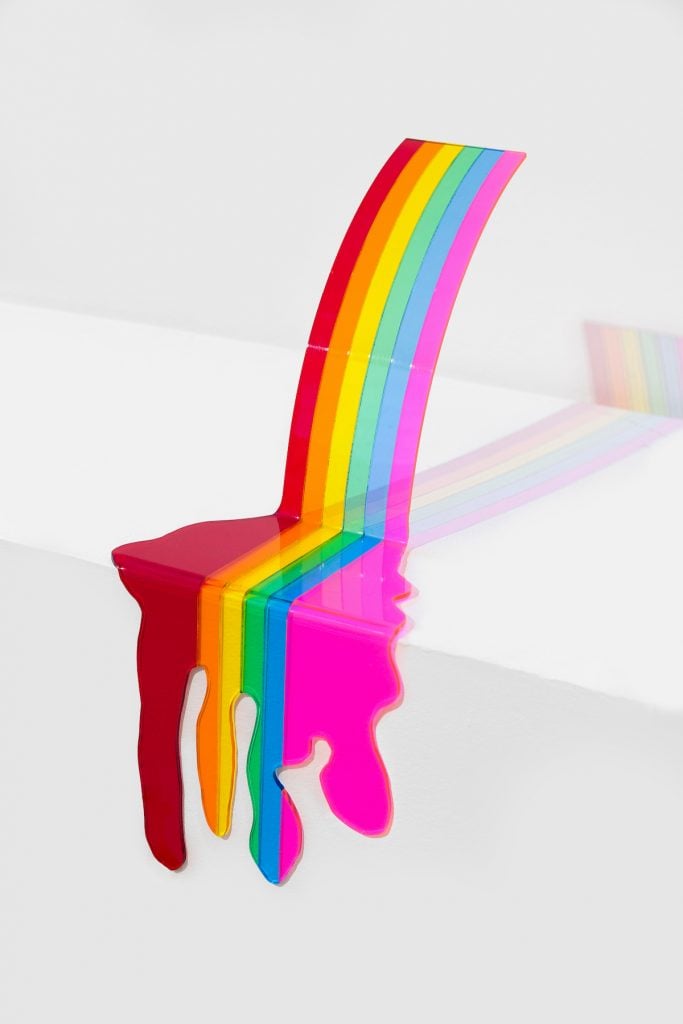
Billy Apple, Rainbow (1965). Courtesy of the Mayor Gallery, London.
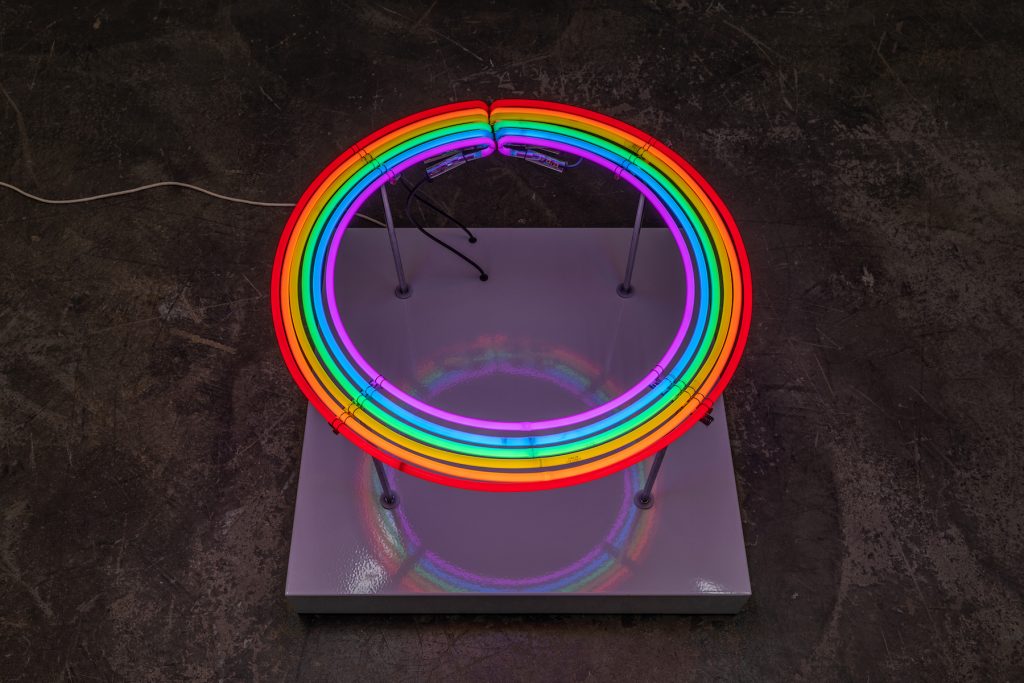
Billy Apple, 360-Degree Rainbow (1965–66). Courtesy of the Mayor Gallery, London.
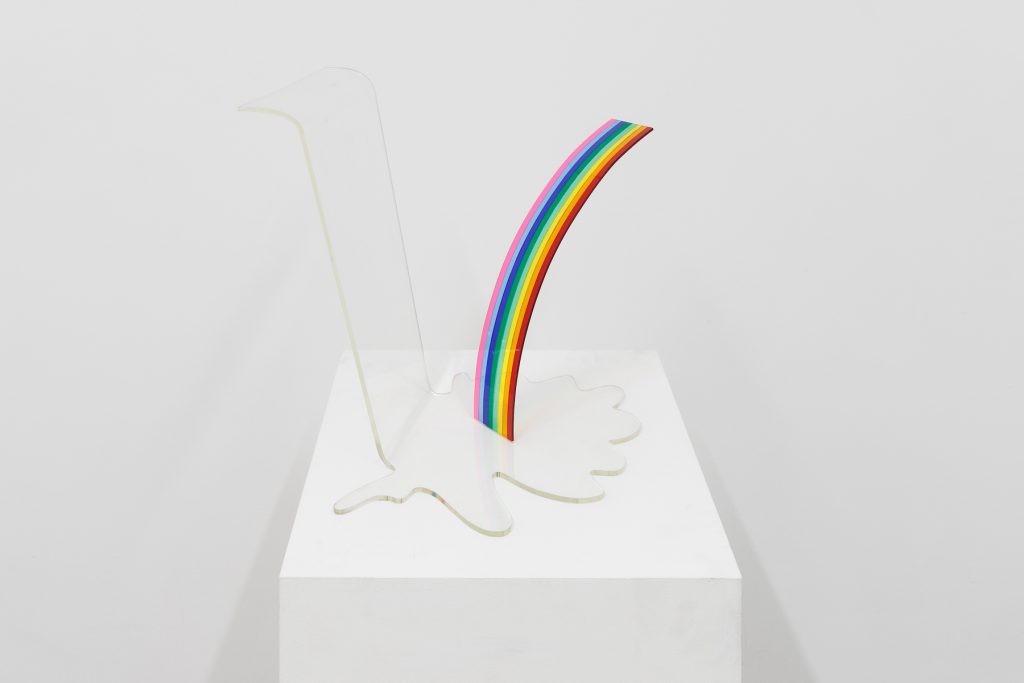
Billy Apple, Rainbow with Waterfall (1965). Courtesy of the Mayor Gallery, London.
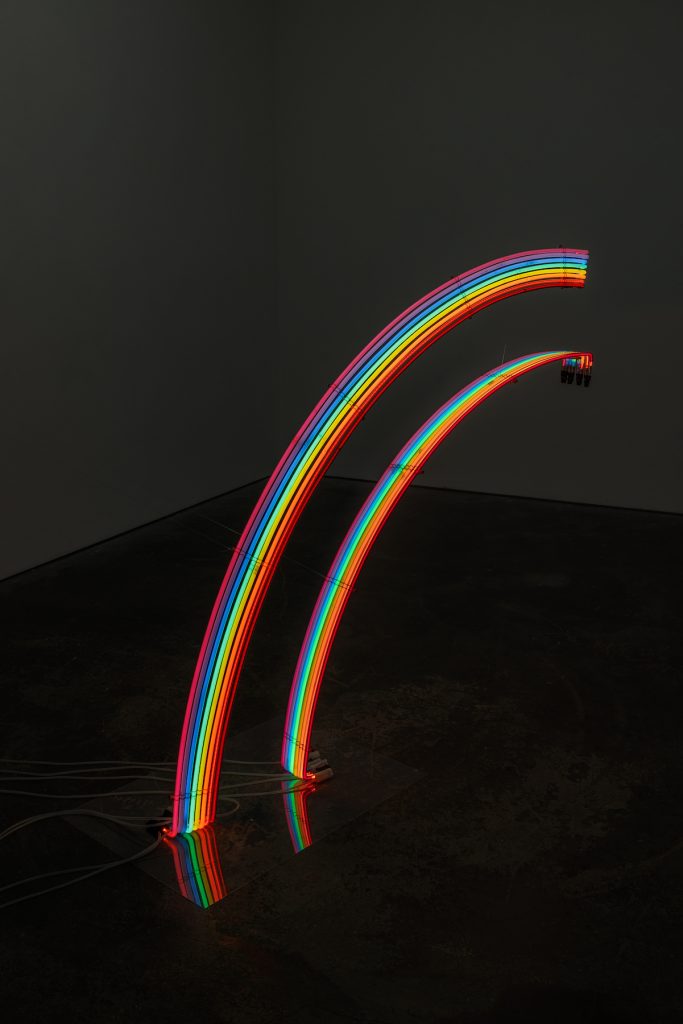
Billy Apple, Double Rainbow (1964). Courtesy of the Mayor Gallery, London.
“Billy Apple®: Rainbows 1965” is on view at the Mayor Gallery, London, through July 27, 2022.









